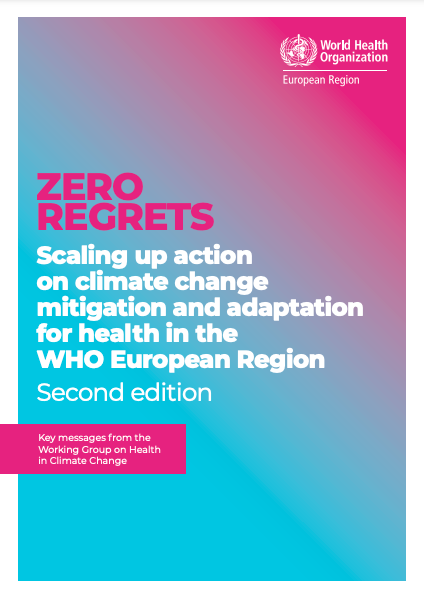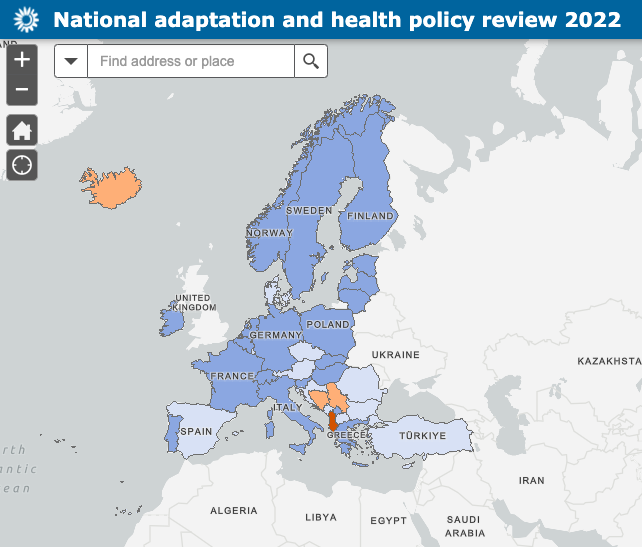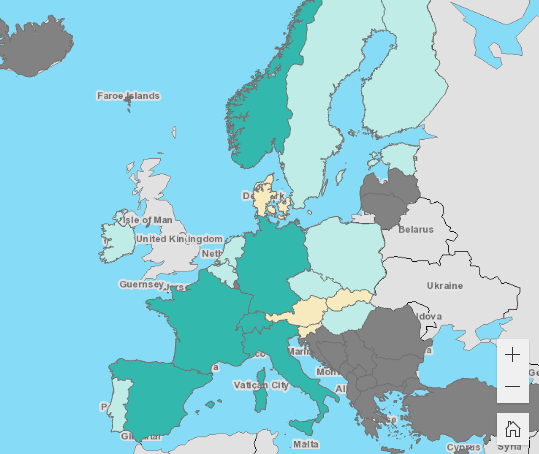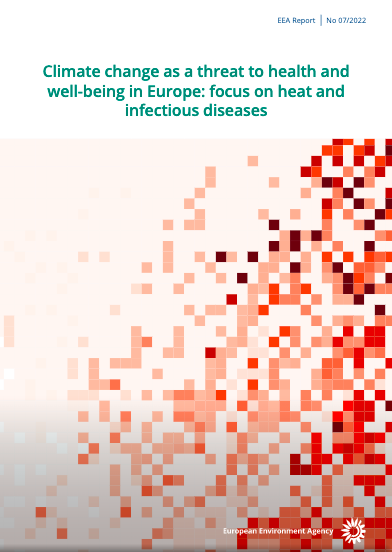1. The Seventh National Communication of the Slovak Republic on Climate Change. Ministry of Environment of the Slovak Republic; 2017
2. Data: Slovak Republic. World Bank Group; 2020
3. Climate Change Knowledge Portal: Slovakia. World Bank Group; 2020
4. Update of the Nationally Determined Contribution of the EU and its Member States. Submission by Germany and the European Commission on Behalf of the European Union and its Member States; 2020
5. Strategy for the Adaptation of the Slovak Republic to Climate Change. Ministry of Environment; 2018.
6. Quality criteria for health national adaptation plans. Geneva: World Health Organization; 2021. Licence: CC BY-NC-SA 3.0 IGO
7. Kendrovski V, Baccini M, Martinez GS, Wolf T, Paunovic E, Menne B. Quantifying projected heat mortality impacts under 21st-century warming conditions for selected European Countries. Int J Environ Res Public Health. 2017;14(7):729.
8. Romanello M, McGushin A, Di Napoli C, Drummond P, Hughes N, Jamart L et al. The 2021 report of the Lancet countdown on health and climate change: code red for a healthy future. Lancet. 2021;398(10311):1619–62. doi: 10.1016/S0140-6736(21)01787-6.
9. The Lancet. Explore our data (website). Lancet countdown: tracking progress on health and climate change
10. Zelená správa 2020: Správa o poľnohospodárstve a potravinárstve v SR za rok 2019. Ministry of Agriculture and Rural Development of the Slovak Republic; 2020
11. Maggiore A, Afonso A, Barrucci F, De Sanctis G. Climate change as a driver of emerging risks for food and feed safety, plant, animal health and nutritional quality. EFSA Journal. 2020;17(6):EN-1881 doi: 2903/sp.efsa.2020.EN-1881
12. Aqueduct Flood Risk Data. World Resources Institute. Aqueduct; 2020
13. Act no. 7/2010 on Flood Protection. Slov-Lex; 2021
14. Floods and health protection. Úrad Verejného Zdravotníctva Slovenskej Republiky; 2021
15. Atlas of health and climate. Geneva: World Health Organization and World Meteorological Organization; 2012
16. Kerlik J, Avdičová M, Štefkovičová M, Tarkovská V, Pántiková Valachová M, Molčányi T et al. Slovakia reports highest occurrence of alimentary tick-borne encephalitis in Europe: analysis of tick-borne encephalitis outbreaks in Slovakia during 2007–2016. Travel Med Infect Dis. 2018;26:37–42. doi: 10.1016/j.tmaid.2018.07.001.
17. Peťko B. Kliešte Slovenska v minulosti a dnes. In: Parazity v mestách pod vplyvom globálnych zmien: zborník abstraktov z konferencie. Košice: SAV, Parazitologický ústav, 2015. ISBN 978-80-89707-09-6, s. 12.
18. Majláthová V. Kliešte a kliešťami prenosné patogény vo vysokohorských oblastiach. In: Parazity v mestách pod vplyvom globálnych zmien: Zborník abstraktov z konferencie. Košice: Parazitologický ústav SAV, 2015. ISBN 978-80-89707-09-6, s. 14.
19. Peťko B. Kliešte v podmienkach globálnych zmien. In: Vybrané kapitoly zo všeobecnej parazitológie. 1. vydanie. Košice: Parazitologický ústav, SAV, 2005. ISBN 80-968473-4-1, s. 115-130.
20. Molčányi unpublished.
21. Kerlik unpublished.
22. Ambient Air Pollution Database. WHO; 2018.
23. Ambient air pollution – Deaths by country. Geneva: World Health Organization, Global Health Observatory data repository; 2016
24. WHO Regional Office for Europe, OECD. Economic cost of the health impact of air pollution in Europe: clean air, health and wealth. Copenhagen: WHO Regional Office for Europe; 2015
25. UNFCCC Greenhouse Gas Inventory: Slovakia. UNFCCC; 2020
26. Climate and health country survey (part of the WHO UNFCCC Health and Climate Change Country Profile Project). Geneva: World Health Organization; 2021
27. International health regulations (2005) monitoring framework. State Party self-assessment annual reporting tool (e-SPAR). Geneva: World Health Organization; 2019












